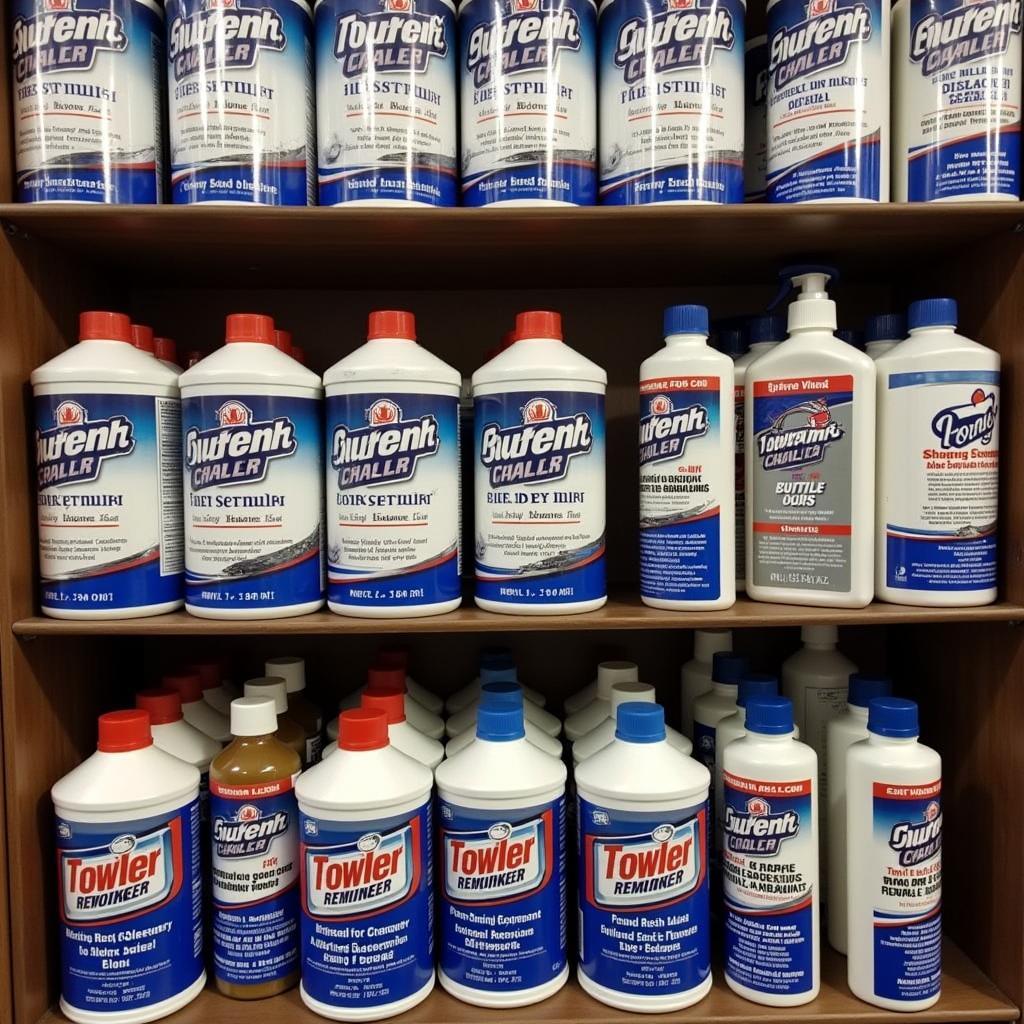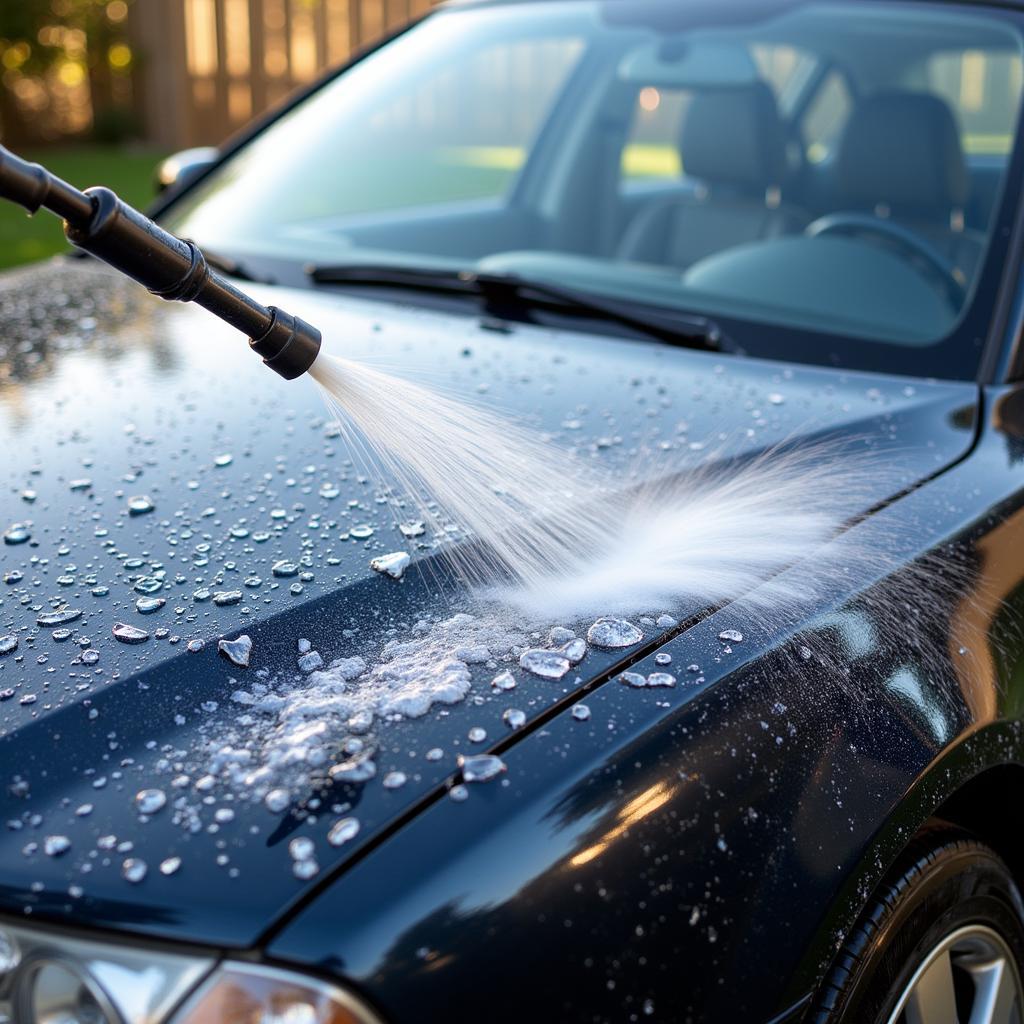Iron contamination is a silent killer for your car’s paintwork. If you’re serious about car detailing, understanding the importance of a good iron remover and how to use it effectively is crucial. This guide dives deep into the world of iron removers, helping you choose the Best Iron Remover Car Detailing product for your needs.
Choosing the best iron remover for car detailing can feel overwhelming with the sheer number of products on the market. But with the right information, you can make an informed decision. This guide explores everything from the science behind iron contamination to the practical application of iron removers. We’ll help you understand what to look for in a quality product and how to achieve professional-level results. Let’s transform your car detailing process.
Understanding Iron Contamination and Why It Matters
Iron particles, often invisible to the naked eye, embed themselves in your car’s clear coat, derived from brake dust, industrial fallout, and even rail dust. Over time, these particles oxidize, leading to unsightly brown spots, commonly referred to as “rail dust” even if the source isn’t railway related. Left untreated, this contamination can cause permanent damage to your paint, diminishing its gloss and value. This is where the best iron remover car detailing products come into play. best chemicals to detail cars can significantly improve your detailing game.
How Iron Removers Work
Iron removers utilize a chemical reaction to dissolve these ferrous particles, effectively lifting them from the paint’s surface. This process, often accompanied by a dramatic color change (typically to purple), visually demonstrates the remover’s efficacy. Choosing the right product for your needs is crucial, however. Some are more aggressive than others, and certain formulations are better suited for specific paint types.
Choosing the Best Iron Remover for Car Detailing
Not all iron removers are created equal. Factors like concentration, pH level, and added lubricating agents can significantly impact their performance and safety. Here’s a breakdown of what to consider when choosing the best iron remover car detailing solution:
- Concentration: Higher concentrations typically indicate faster acting and more powerful formulas, but they can also be more aggressive. Opt for a milder formula for regular maintenance and a stronger one for heavily contaminated vehicles.
- pH Level: The pH level indicates the acidity or alkalinity of the solution. Lower pH levels are generally more effective at dissolving iron, but they can also be harsher on delicate surfaces. Look for a pH-balanced formula that’s both effective and safe.
- Lubrication: Some iron removers include lubricating agents to minimize the risk of scratching during application and removal. This is particularly important for sensitive paint finishes.
 Different Iron Remover Products for Car Detailing
Different Iron Remover Products for Car Detailing
How to Use an Iron Remover Effectively
Proper application is key to maximizing the effectiveness of your chosen iron remover and achieving optimal results. Here’s a step-by-step guide:
- Wash and Dry: Thoroughly wash and dry the vehicle to remove any loose dirt and grime.
- Apply the Iron Remover: Spray the iron remover evenly onto the affected areas, ensuring complete coverage.
- Allow to Dwell: Let the product dwell for the recommended time, typically 3-5 minutes, or until the color change indicates the iron is being dissolved.
- Rinse Thoroughly: Rinse the area thoroughly with a pressure washer or hose, ensuring no residue remains.
- Inspect and Repeat: If necessary, repeat the process for heavily contaminated areas.
A Word of Caution
Always test the iron remover on an inconspicuous area first to ensure compatibility with your car’s paint. Avoid applying the product in direct sunlight or on hot surfaces, as this can lead to premature drying and potentially damage the paint. best way to detail clean a car incorporates the use of appropriate chemicals for each step.
Best Practices for Maintaining a Contamination-Free Finish
Regularly using an iron remover, especially after driving in areas with high levels of industrial fallout or near railways, can help prevent long-term damage. Combining this with a good quality car wax or sealant can provide an additional layer of protection against future contamination. Knowing the best iron remover for car detailing is just the first step; consistent application is crucial.
 Rinsing a Car After Applying Iron Remover
Rinsing a Car After Applying Iron Remover
Conclusion
Using the best iron remover car detailing products is essential for maintaining your car’s appearance and protecting its value. By understanding the science behind iron contamination and following the proper application techniques, you can achieve professional-level results and keep your car looking its best. Remember to choose a product that suits your specific needs and always prioritize safety. Selecting the best iron remover for car detailing ensures a pristine finish for your vehicle.
FAQs
- How often should I use an iron remover?
- Can I use an iron remover on all paint types?
- What’s the difference between an iron remover and a fallout remover?
- Are iron removers safe for wheels?
- How do I know if my car needs an iron remover?
- Can I use an iron remover on other surfaces like glass?
- What are the signs of iron contamination on my car?
For further guidance on car detailing products, you can explore articles on the best way to detail a car interior and best products for interior car detailing. For more specific recommendations, see our comprehensive guide on the best iron remover for car detailing.
Need expert advice? Contact us via WhatsApp: +1(641)206-8880, or Email: [email protected]. Our 24/7 customer service team is ready to assist you.

Leave a Reply